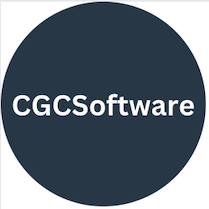Chasing your own tail
Working on the internet is great, it gives people around the world a level playing field in which to achieve their goals. A single developer can start a simple project with only a laptop and a internet connection and within a few years they can be in charge of a massive global company. But the internet is also a crazy place with it’s rush to get the latest technology out there, the newest framework, the ideal way to build an app or the latest social network.
As someone who works with the web I find that somedays I am spinning around like a dog chasing it’s tail (which is always funny) trying to keep up with what’s new or to find out how a new technology works. For example here’s a list of technologies I currently have an interest in:
- Angular 1
- Angular 2
- Ionic 1
- Ionic 2
- NodeJS
- ExpressJS
- Sass
- Less
- Firebase
- Bootstrap
- Responsive Web Design
- Mobile app development
Some list, it looks like one of those job ads that list everything but really tell you nothing about the role. This is another list of technologies a modern web developer could look at:
- React
- React Native
- NodeJS
- Express
- HapiJS
- Angular 1 & 2
- Ionic 1 & 2
- AppCelerator
- NativeScript
- Sass/Less
- RWD
- Native iOS
- Native Android
- jQuery
- Ember
- .Net framework, all of it
- Git
- PHP
- Rails
This is a long list, it’s taken me a whole day coming up with the list let alone spending time learning these technologies.
The problem that the web has is that it’s become a massive marketing playground. Large technology companies are telling developers that there technology is best, that it does everything a developer will want or that the latest version of their technology is coming out with these amazing features.
Then there is social media telling developers about what they should be looking into, what is going to be the next big thing over the coming year. Or which technology/framework all new projects will be built it so you ‘must’ be using this or you’ll miss out. Then there is the recruitment industry that likes to tell developers that their clients are looking for developers who can do this (see list above).
It’s crazy.
I remember when I started working on the web all you needed was HTML, CSS and JavaScript, that’s it. These three technologies are still around, see central to working on the web.
In order to stop feeling like a dog chasing it’s tail (see it’s mad) I need to focus on a few things, Angular, Ionic, JavaScript, Sass, HTML and GTD. By narrowing down what I’m looking, by specialising what I do it’ll make me a better developer.
So now I need to go into my RSS reader and Twitter and remove the feeds and accounts of things I think I should be interested in and just have a few feeds on these technologies and a follow a few Twitter accounts.
The web is great, but it is also crazy being able to specialise is better than trying to learn everything, that’s impossible.
A great book about this is Philip Morgans – The Positioning Manual
